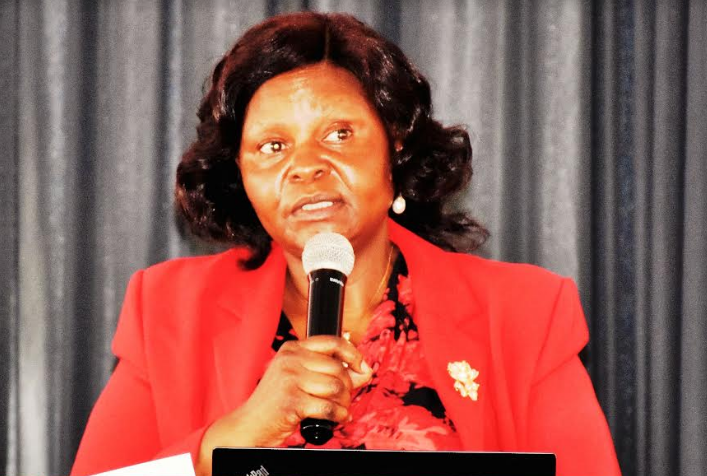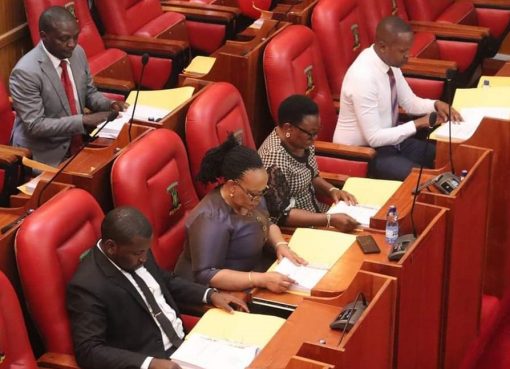The Chairperson of the Commission on Revenue Allocation (CRA) Certified Public Accountant (CPA) Mary Wanyonyi Chebukati is urging the 47 county governments in the country to pass and implement tariffs and policy on pricing in order to avoid litigations.
Mrs. Chebukati said the tariffs and pricing policy would go a long way in helping counties raise more revenue from Own Revenue Sources (OSR) for the provision of services to their residents.
The CRA chair noted that most of the counties were operating below their potential in the collection of their own source revenues, with key consideration in determining tariffs being the cost of the service being provided.
According to CRA, no county has passed any policy on Tariffs and Pricing but has solely relied on Finance Acts.
CRA noted that the move by counties to use Finance Acts to collect and levy fees and charges has seen 41 counties sued for breach of law and use of Finance Acts to levy fees and charges without a solid policy anchored in law.
“Before the 2010 Constitution, this was managed by the Ministry of Local Government, but we’ve come a long way since then. This is particularly important considering 41 county governments have been taken to court challenging their use of the Finance Act, 2023, as the basis to levy fees and charges for the services they offer,” Chebukati remarked.
CRA is now banking on the enactment and implementation of Tariffs and Pricing Policies by counties to boost their own sources of revenues for effective service delivery.
Mrs. Chebukati was speaking in Naivasha on Tuesday, where CRA is meeting with officials of some 12 counties to discuss the dissemination of the Model Tariffs and Pricing Policy for County Governments, along with the findings from the OSR Potential and Tax Gap Study Report.
The counties are being sensitised on the need to enact policy on setting tariffs, levies, and taxes. The CRA clarified that policy does not provide guidelines on the issue of taxes but only fees and charges by counties.
“Our journey took a significant step forward on June 18, 2024, when we successfully launched the Model Tariffs and Pricing Policy for County Governments in Nairobi. Now, we turn our focus to the next crucial step: sharing this policy with all 47 counties, so each one can adopt and adapt it to their unique circumstances,” the CRA chair stated.
Chebukati reiterated that her organisation would support the counties in the adoption of this Model Tariffs and Pricing Policy as they tailor it to meet the specific needs of their counties in a bid to lay the groundwork for a more sustainable future for communities.
CRA is optimistic that the domestication of the policy would boost County Revenue streams and enhance ease of doing business in counties by eliminating duplicity of user fees and charges for similar services.
The model policy which counties need to enact and implement in the next three years targets five revenue streams, including trade licensing fees, building approvals, parking, market access fees, and housing rent fees, which CRA noted have high potential for growth.
CRA is set to engage all the counties within the next three months, with the first forum bringing together revenue and municipality managers from 12 counties, including Migori, Kisumu, Bomet, Elgeyo Market, Nandi, Laikipia, Kisii, West Pokot, Kakamega, Homabay, Kericho, and Nyeri.
The chair observed that, as outlined in Article 216(2) of the Constitution of Kenya, the Commission has a vital role in shaping the financial landscape of our county governments.
This responsibility, she said, empowers the commission to make meaningful recommendations that enhance revenue sources and improve financial management for both national and county governments.
She reminded the counties that Section 120 of the County Governments Act required every county to establish its own Tariffs and Pricing Policy, yet, to date, none has fully embraced this responsibility, and that is why the Commission, through the 2019 National Policy to Support Enhancement of County Governments’ Own Source Revenue, was assigned the responsibility of assisting county governments to develop their own Model Tariffs and Pricing Policy.
“The benefits of adopting this Model Policy are substantial. It helps identify key revenue streams that are cost-effective in relation to administration costs, guiding counties to set fees that reflect the value of the services they provide,” Chebukati said.
It also ensures compliance with the law, especially as we currently lack a clear framework for levying charges, and most importantly, it also seeks to eliminate the confusion that arises from duplicative fees for various services.
By Mabel Keya–Shikuku and Erastus Gichohi



